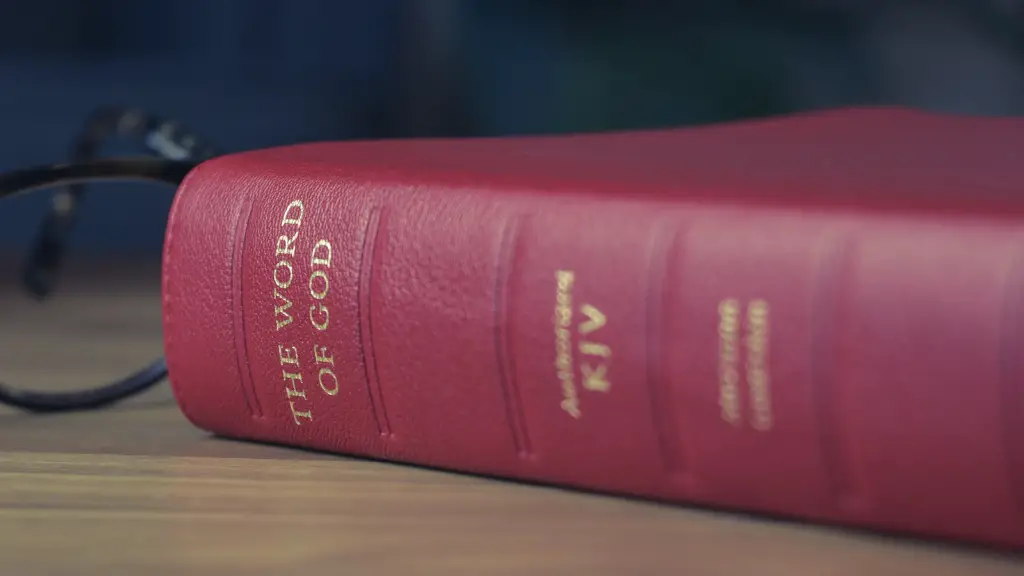What Is The Most Accurate Translation Of The Bible
Since its publication in 1611, the King James Bible (KJV) is renowned for its accuracy in translating the words of the original Greek, Hebrew and Aramaic scriptures. But while this is still widely held as the most faithful rendition, advancements in language studies and resulting improvements to theological scholarship are challenging its status as the paramount Scripture version.
In the centuries that followed its debut, Bible translators have faced unique difficulties in toilfully translating between languages and times. On one hand, scholars must preserve the original intent of the text, but on the other, embrace the linguistic nuances of the target language, providing an updated and modern take on an ancient text. Countless different versions of the Bible are published in English today, varying in both style and accuracy.
The exegetical studies of renowned scholars such as Martin Luther have shaped our understandings of the Bible’s underlying message. But while the KJV encapsulated Luther’s insights, the disparity between the 16th Century English and its 21st Century equivalent presents significant interpretative issues. Newer translations are better able to bridge this language barrier, but the sheer complexity of the task means that bias often infiltrates their agendas.
The archeological discoveries of the past century have furthered our knowledge of the ancient world, unlocking deeper levels of interpretation than Luther could have ever anticipated. The role of these developments in modern Bible translation cannot be overstated, with many contemporary editions built upon an unmatched database of archaeological and linguistic research.
The emergence of comparative editions has served to further complicate matters. These versions readily invite comparison between similar passages across different translations, providing insight into potential misinterpretations, as well as highlighting interesting discrepancies in the sense and the spirit of the Scriptures.
The recent influence of technology gives readers unprecedented access to a range of different translations, allowing them to view averse interpretations more easily than ever before. Online platforms have enabled a new age of commentaries, publishing data from a variety of sources, allowing for a more informed decision on the reader’s behalf.
This highly nuanced and often technically difficult task of translation has led to divergence in opinion between experts. Dr Gordon Wenham, a respected Old Testament Scholar, argues that the New International Version (NIV) is “an immensely helpful and reliable guide to the meaning of the Hebrew text”, suggesting it as possibly the most accurate representation currently available. Others, such as Professor B.B. Warfield, put forth the King James Version as their preferred rendition.
Advances In Technology
In recent years, technological advances have had a profound impact on the process of Bible translation. Computers are uniquely suited to address the complexities of the Hebrew and Greek manuscripts, greatly shortening the length of time needed to translate. Software has opened up a wealth of new resources, making the process more accurate than ever and making it possible to compile complex glossaries with ease.
Coupled with modern lexicography, computers can quickly identify and calculate the most appropriate words and terms within the target text. Additionally, to ensure an accurate rendition, footnotes, analytic Greek texts, handbooks and commentaries can be customised to allow for comparison of different Bible versions, such as Greek and English.
This pool of technological resources provides translators with an unprecedented degree of accuracy, allowing them to achieve levels of consistency that are far beyond the reach of any human. This also allows other forms of Bible version to become more accessible, providing enriched understandings of the original words of Scripture in ways that the King James Version never could.
Building on this enhanced technical capability, digital media has taken Bible translations to the next level.
Digital Bible Edition
Digital Bibles provide a comprehensive and comprehensive Bible experience, with advanced high-resolution visuals and audio. Animations, video clips and interactive learning tools can be tailored to specific Topics, helping make them more engaging and informative. Additionally, user accounts can be connected across different devices, allowing readers to take their studies with them wherever they go.
These fully integrated Bible apps provide readers with unparalleled access to the original languages and nuances of the Bible. With a wealth of primary and secondary source material, they can be tailored to individual users’ levels of knowledge, allowing each reader to find what resonates most with them. This also encourages an informed understanding of the text, providing a diverse range of commentaries from experts in the field.
The sheer amount of Bible versions available through such apps is astounding. Not only are the English-language versions extensive, but translations from languages as diverse as Spanish, French and Korean can also be found. This gives readers access to the most accurate versions of the Bible.
Alternate Accountings
For those interested in alternative understandings of the Bible, there are a range of other translations available. These provide a more modern and updated view of Scripture, providing insights into the cultural shifts and shifts in religious values that have taken place in the centuries since the King James Version was compiled. Examples such as the New Revised Standard Version or The Message attract readers because they bring a fresh perspective to the ancient words of the Bible.
In the age of information revolution, Bible translations must bring together the best elements of traditional and technological disciplines to ensure accuracy and consistency. They must also provide a platform that readers can use to understand complex biblical topics and allow them to draw their own conclusions. Therefore, while there is no single “best” version of the Bible, translations must always strive to be faithful to the original manuscripts as well as accessible to their readers.
Pluralistic Interpretation
The ability for readers to explore pluralistic interpretations of the Bible is an invaluable asset. Indeed, many translations have emerged over the years aiming to elucidate the hidden messages of Scripture. For example, The Meaning-Centered Bible provides a unique take on the stories of the Old Testament and New Testament, offering readers an alternate approach to understanding these ancient tales.
These non-traditional paths of discovery often attract readers interested in uncovering the deeper spiritual meanings and existential messages contained within the text. Through commentary, scholarly research and personal narrative, they provide a more immersive experience, giving readers a remarkable insight into the true message of the Scripture.
Modern Devotions
Modern devotionals provide readers with an inspiring and informative way to deepen their knowledge of the Bible. These collections of readings, commentaries and study notes based on key passages give readers access to the thoughts and writings of some of the world’s revered theologians. Devotionals often break down the text in ways that are both simple and profound, ensuring the original intent of the passage is accurately communicated.
Many devotionals are multimedia experiences, incorporating audio and visuals to help bring the stories to life. This creates more meaningful moments of reflection, giving readers a more personal and interactive experience.
Additionally, devotionals can focus on specific topics, allowing readers to explore characters or themes in greater depth. This encourages readers to go beyond simply reading the Bible; they can take important lessons away and apply them in their everyday lives.
Impact Of Media
Digital media has had an immense impact on the way that people engage with the Bible. Through electronic devices and online platforms, Scripture is more accessible than ever before. This allows readers to explore different translations, compare alternative versions and access an abundance of resources from any location.
At the same time, the incorporation of multimedia elements has enabled readers to view the Bible in entirely new and immersive ways. Animation, artwork and audio content can be used to help convey meaning, allowing for more interactive and engaging Bible studies.
Additionally, the emergence of dedicated Bible apps has given readers unprecedented levels of convenience and flexibility when exploring Scripture. These apps allow them to track their progress, organise specific topics and share their thoughts with like-minded friends.
From the earliest days of translation, the accuracy of the Bible has always been a key priority. While no translation is perfectly faithful to the original manuscripts, technology has allowed modern interpretations to come as close as possible. Modern translation projects should seek not only to recreate the original message of Scripture, but to enhance it and make it more accessible for the modern reader.





